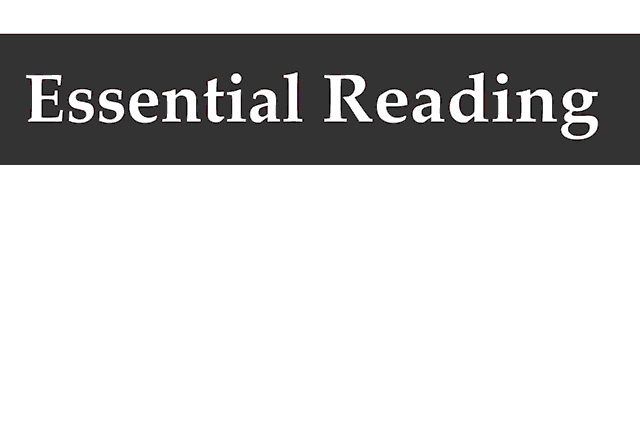May 10th, 2025
BURLINGTON, ON
I was hoping to manage the Liberal media bus again for the 2025 Carney election campaign. It’s really a sweet gig if you don’t mind the odd moments of terror. You get to see Canada in all its beautiful glory, meet old friends, make new friends – and get a front-row seat to history. There are also a lot of laughs along the way.
I also welcomed a change of pace from my duties as a public affairs consultant as we prepared our clients last year for what seemed like an inevitable Pierre Poilievre coronation. We analyzed his National Post Memo to corporate Canada: Fire your lobbyist with the intensity of Talmudic scholars studying ancient scrolls. With the Liberals languishing in the polls as late as January, it was a dispiriting task.
I served as Justin Trudeau’s media bus “wagon master” in 2015 and shared those duties in 2019 with the indomitable Terry Guillon. I wrote about the experience and my moment of terror in my 2019 chronicle Confessions of a campaign wagon master.
But I would not see the open road in the April 28 election. With fewer media organizations hopping on the bus, it was decided that Guillon would work alone. I was grounded. Instead, I would support the tour and communications teams as an adviser at Liberal campaign headquarters. I was told I would be an adult in the room. They said our team was good but very young and my experience would be helpful, especially to keep people calm when things went bad.
I can do that, I said. Prime Minister Mark Carney was my fourth Liberal PM. I had certainly seen the good and bad over a lifetime as a campaign hand. When needed, I can project a semblance of calm while dying inside.
I joined the campaign a few days before the election was called and was never once required to be an adult in the room. I was so impressed by the talent coalesced around the Carney campaign. They were young for sure, but smart, focused and team-oriented. Carney had to build a campaign team on the fly while wrapping up the party’s leadership race and naming a new cabinet. What would normally have required months of preparation was undertaken in a matter of days. It was like hopping on a jet as it was rolling down the runway.
Technology and campaigns
The 2025 campaign made me reflect on the incredible changes I have seen over the last 30 years as the world and politics have gone from analog to digital. Technology – once a nice-to-have – is now the campaign’s brain and central nervous system.
In 1990, as a Jean Chrétien leadership campaign staffer, I had a primitive database and dot-matrix printer that I had to buy myself. With these tools, we tried to identify and reach Liberal youth by telephone, mailings, school kiosks and word of mouth. For the leadership convention, I was given a foot-long Motorola cell phone that had little reception or battery life.
Today’s computers are thousands of times more powerful and have fundamentally transformed how we manage campaigns. Smartphones connect us to voters and allow us to engage them directly and constantly in ways unimaginable a few decades ago.
Computer power was once used mainly for basic polling data, with our messaging limited to broadcast and printed forms. Campaigns now also use ads and other content on TikTok, Instagram, Facebook, Google and YouTube to target voters with tailored messages. We can track engagement and adjust strategies instantly. The effectiveness is immediately measurable.
Modern campaigns require a digital-savvy workforce. The teams are much larger, more specialized and younger.
The notion of time is also different now. Campaigns fly on 36- to 48-hour horizons compared to week-long plans in the olden days. That broader media cycle also includes mini-cycles like the Buttongate kerfuffle or candidate immolations that come and go in mere hours.

A rally that would once have taken several days to organize is now put together in an astonishing 24 hours.
Our campaign was a sophisticated on-time delivery system. A rally that would once have taken several days to organize is now put together in an astonishing 24 hours. Today, we invite party members with a quick email blast rather than working the volunteer phone banks for days in the hope of drawing people out. Today, we can precisely calculate from the RSVPs how many people will fill the room.
The campaign pivot
The first half of the campaign was about pivots. Carney suspended his campaign to respond to U.S. President Donald Trump’s tariffs with credible policy, reassuring language and compelling campaign visuals. Many people moved a lot of parts to make it all align over a series of long stressful nights. Poilievre’s campaign did not make the same pivot, continuing to focus for days on the same domestic issues.
A campaign needs leadership with awareness and courage to pull off these pivots. At the same time, it’s not always clear how to balance old and new messages. The leader must know when to pick the right spot. It’s also risky when the normal planning of media events and the vetting of people and venues are compressed.
Our campaign frequently changed plans. After a lull for the debates, the final 10 days were a sprint to locations where polling data was promising. A leader’s visit can add one or two percentage points of support in that location if the visit is done well.

A high-tech piece of equipment known as a white board featuring cutting-edge dry- erase markers and dollar-store sticky notes. It was here that campaign pivots would be plotted out.
Deep in the bowels of the Ottawa campaign headquarters, our office managed the tour team board – a high-tech piece of equipment known as a white board featuring cutting-edge dry- erase markers and dollar-store sticky notes. It was here that campaign pivots would be plotted out.
The board was not meant to be shared because everyone was supposed to focus on delivering for the next day. But I would occasionally, surreptitiously, share images of the board with anyone who used flattery on me. Often, halfway through a pivot plan, further changes would come. More than once, I was accused of “jinxing the board” with my photos. Cake or doughnuts were often the only remedy for the shaming that ensued.
To pull a policy pivot in an area such as support for the steel industry or auto sector, our teams in communications, digital, tour and voter outreach came together to do a week’s work in 24 hours. Policy people worked collaboratively and virtually on a draft. The tour located, vetted and set up new announcement locations. The campaign linked up with local candidates and media, repositioned the campaign airplane and buses and found hotels for dozens of people.
Communications and policy people crafted messages for the media and digital content, and wrote speaking points. Senior leadership had to get the policy approved by the candidate and help prepare for the media availability. All products had to be in French and English.
The policy was then disseminated to Canadians through a multi-channel strategy. It started with the leader’s announcement and media availability live-streamed across social media and to the networks via the media pool. The campaign undertook a media blitz with press releases and infographics that could be shared on social media alongside short videos.
Email and text messaging were used to directly engage supporters while MPs were briefed so they could promote the policy through townhalls and local events. Paid ads, third-party supporters and rapid-response fact-checking helped reinforce messaging and counter criticism. A well co-ordinated rollout ensured maximum reach, strengthened the narrative and hopefully built sustained momentum.
U.S. Defence Secretary Peter Hegseth recently made Signal chats famous, but our campaigns have used them since 2019 for less confidential plans for everything from communications within teams to channels dedicated to daily activities. I was on the policy platform launch chat and I observed with wonder as my smarter colleagues doggedly shaped our platform and compared the fine details to those of other parties.
Digital and traditional media
Digital content is a core campaign pillar today. The 2015 election was famously the “selfie” campaign. We had one videographer on the road, streaming events from a fixed position. In 2019, we added a second handheld camera.
In 2025, a dedicated team followed the leader producing sophisticated Instagram feeds and shareables showing Carney in action. Our digital campaign was successful at introducing Carney to Canadians as a relatable, warm person. The Mike Myers spot and the Nardwuar vs. Carney video were huge digital hits.

Soundcheck for Down with Webster, the band that played at the Liberal victory party at TD Place Arena in Ottawa. DAVID RODIER
Traditional media made a bit of a comeback in 2025. Carney got worldwide attention with the video where he said the longstanding U.S.-Canada relationship is over. The media bus provided value to the Liberal campaign, giving us at least a dozen media travellers each week. As Get Fact’s Kevin Newman put it on LinkedIn: “Having experienced national political reporters around makes them advocate for airtime, and the media bosses want to see value for their investment in covering it.”
A consequential campaign
In his stump speeches, Carney called the 2025 election one of the most consequential of our lives. And it was. Over the past few years, Canada, like other Western democracies, has experienced a deepening crisis in trust in our major institutions.
The 2023 Edelman Trust Barometer categorized Canada as “moderately polarized.” By 2025, it indicated a profound shift toward a grievance-based society marked by economic fears and a pervasive belief that systems are unfair. I feel relief that through Carney the political middle held.
Liberal voters saw the prime minister as an expert who spoke thoughtfully and was someone who acknowledged that things were hard, showing them the trade-offs and making an appeal for unity.
Carney was also propelled by an energetic and unified campaign team through two debates and at least 98 events. They were young, ethnically diverse, idealistic, progressive and came from across Canada. The digital whiz kids were supported by a bench of battle-hardened veterans who worked together to make it all happen. It was really a great mix.
While Trudeau departed under less-than-ideal circumstances in January, he did inspire many people to get engaged and join the Liberal cause in 2015. He left Carney with a legacy of MPs and talented staff who helped deliver the 2025 election victory.
Liberal MP Steven MacKinnon, who once worked for former New Brunswick premier Frank McKenna, recounts a line Brian Mulroney once told his boss: Just when you think the Liberal Party is dead, it gets up and kicks your ass.
And just when you go into a campaign to be an adult in the room, you walk away in awe of the next wave of Liberal campaign staffers and grateful to have been a part of it.
 David Rodier is a lawyer with over 30 years of experience advising senior leaders from the federal government, national nongovernmental organizations and business worlds. He is managing director, corporate communications, at Edelman Canada. He has served in senior campaign roles for prime ministers Jean Chrétien, Paul Martin, Justin Trudeau and Mark Carney.
David Rodier is a lawyer with over 30 years of experience advising senior leaders from the federal government, national nongovernmental organizations and business worlds. He is managing director, corporate communications, at Edelman Canada. He has served in senior campaign roles for prime ministers Jean Chrétien, Paul Martin, Justin Trudeau and Mark Carney.










Good article, thanks for sharing, David.